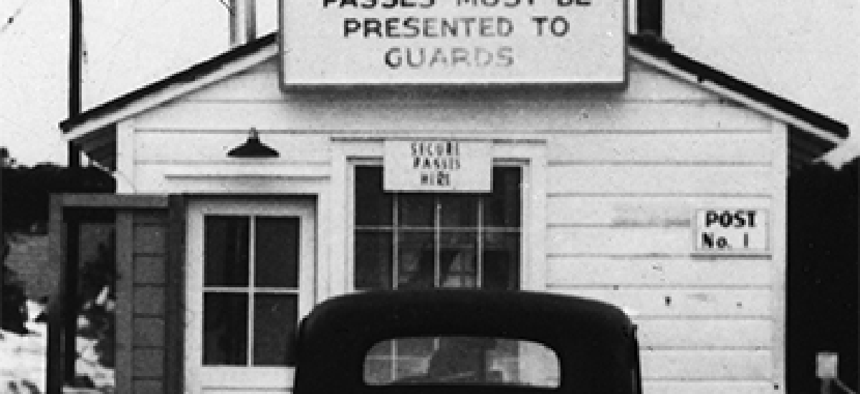Los Alamos Lab gets its own app

The once-secretive government lab that gave birth to the atomic bomb now offers history and news to anyone with an iPhone.

The home of the Manhattan Project, which developed the atomic bomb during World War II. (Los Alamos National Laboratory photo)
One of the U.S. government's historically most secretive installations now markets an application on Apple's iStore.
On June 6, Los Alamos National Laboratory launched its first app for iPhones and iPads as part of its yearlong 70th birthday celebration.
LANL was founded in 1943 to house the Manhattan Project, headed up by Robert Oppenheimer. Back then the facility was so secretive, it was known only by a Post Office box in Santa Fe, N.M., even though it was home to hundreds of workers and scientists who eventually produced two versions of the first atomic bomb.
These days the LANL is a multidisciplinary research institution, specializing in "strategic science on behalf of national security," according to its self-description. Los Alamos National Security, a team that includes Bechtel National, the University of California, The Babcock & Wilcox Company and URS Corp., run the lab on behalf of the Energy Department's National Nuclear Security Administration.
LANL made the free app available on June 6 at the online Apple Store -- search "Los Alamos National Lab." An Android version is expected soon.
The app is intended provide users with information and insight about the lab, including its national security mission, research projects, history, and the scientists and other professionals who make up its roster.
The app also provides easy access to news and other information,
The new app, said LANL, is just one of numerous activities planned in 2013 to mark its 70th anniversary, including public lecture series at the Laboratory's Bradbury Science Museum, a 70th anniversary webpage, which includes a "Faces of Science" section, information on cutting-edge research, videos and historic photos and a pulldown menu of scheduled events open to employees and the public.
NEXT STORY: Weather satellite recovers for storm season





